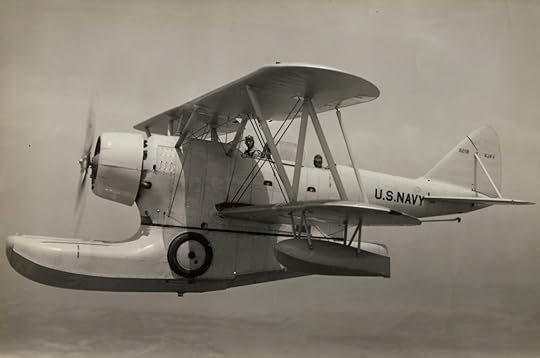What do you think?
Rate this book


391 pages, Hardcover
First published April 23, 2013


Shortly after the plane reached the southeast cost of Greenland, a location that defined the edge of nowhere, disaster struck: …the Skytrooper went down on the ice cap. By some accounts, the crash occurred when one of the plane’s two engines failed, but other reports were silent on why the C-53 experienced what the military called a “forced landing.” The official crash report declared the cause “unknown and no reason given in radio contacts.” A handwritten notation added, “100 percent undetermined.”The air over Greenland was a busy locale in those days, with dozens of flights transporting men and materials to the war every day, then returning home to do it again. But Greenland is the largest non-continental island on Planet Earth so, even with a lot of planes searching, locating a downed aircraft was no simple task. Here are some comparisons:
California – 163,696 sq milesIn other words, big frackin’ haystack.
Texas – 268,820 sq miles
Alaska – 663,696 sq miles
Greenland – 836,302 sq miles

When they reached the end of Koge Bay fjord, [the crew] saw that everything outside was the same frightening shade of whitish gray. They couldn’t tell where the sky ended and the ice cap began…When the true horizon disappears in the Arctic haze, a pilot might as well be blind. Pilots fortunate enough to survive the phenomenon describe the experience as “flying in milk.”Or, ironically, the exact opposite of a milk run. It did not end well, and nine more servicemen were unwillingly grounded.


Imagine searching for a diamond chip buried deep beneath a frozen football field; your best tool is a straw what makes tiny holes into the ground, through which you peer down to see what’s below; if your holes miss by even a little, you’ll miss it; and you have a brief window to explore ten potential locations before being kicked off the field.The story of the attempt at recovering remains is certainly interesting. It is no surprise that there are sundry parties at Department of Defense meetings who offer a chilly reception to the contractor who was looking to undertake the mission. We get to be a fly on the wall for a few of these.
Spencer’s family knew him as warm and funny, and they’d remember him as a man who bought toilet paper in bulk long before warehouse stores. When his younger daughter Carol Sue asked why, Spencer explained: “I have been without toilet paper,” he told her, “and I am never going to be without toilet paper again.”Not Scarlett O’Hara perhaps, but a telling indication of the permanence of the crash experience on the survivors. Many found themselves with increased susceptibility to cold. Not everyone had the luxury of such discomfort. One poor bastard survived a crash in the B-17 only to succumb to another as he was being flown away from the bomber in a rescue plane.

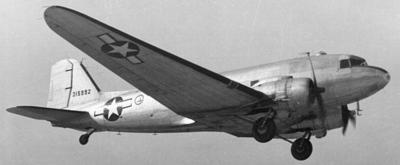

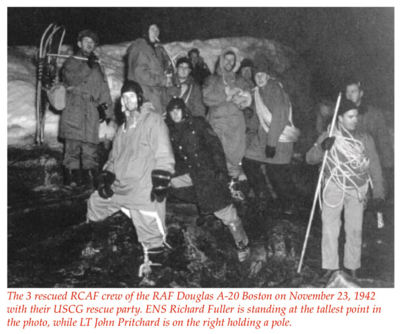
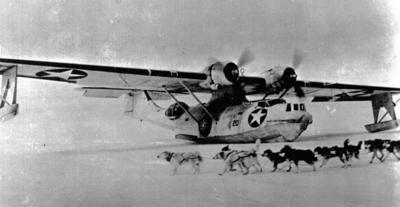


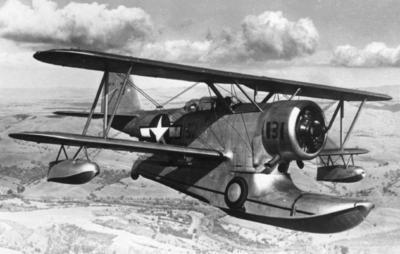
"A more immediate worry was the cold. They had no heat, no light, no stove. They had no
sleeping bags, no heavy clothing, no Arctic survival gear. A few seconds outside would coat a man's face with frost. In minutes, blood would rush from his extremities to his core. Exposed skin would die. In the sky, the men on a B-17 were warriors. On the ground, they were frozen sardines in a busted-open can."
"The war would wait, but freezing American airmen wouldn't."
"In a world where size generally matters, Greenland's doesn't. The island is globally overlooked despite being enormous: more than sixteen hundred miles from north to south, and eight hundred miles at its widest point. Greenland could swallow Texas and California
and still have room for a dessert of New Mexico, Arizona, Florida, Pennsylvania, and all of New England. It's three times the size of France, and it occupies more than twice the area of the planet's second-largest island, New Guinea.
Yet Greenland is the world's loneliest place. With fifty-eight thousand residents, it has the lowest population density of any country or dependent territory. Only Antarctica, with no permanent residents, makes Greenland seem crowded. If Manhattan had the same population density as Greenland, its population would be two."
"To fight cabin fever, they played word games. They named all the countries, rivers, capitals, islands, and every other geographical feature they could think of. They told and retold their life stories and talked about whatever came to mind. Still they ran out of things to say, so they spent long periods in silence. The isolation, the wind, the moving glacier beneath their feet, and the relentless cold preyed on their nerves. They seemed to take turns breaking down, wishing their ordeal were over, one way or another. Each time, the other two would comfort the crying man. When the cycle unraveled, all three sank into despair at the same time. They hatched a suicide pact."
